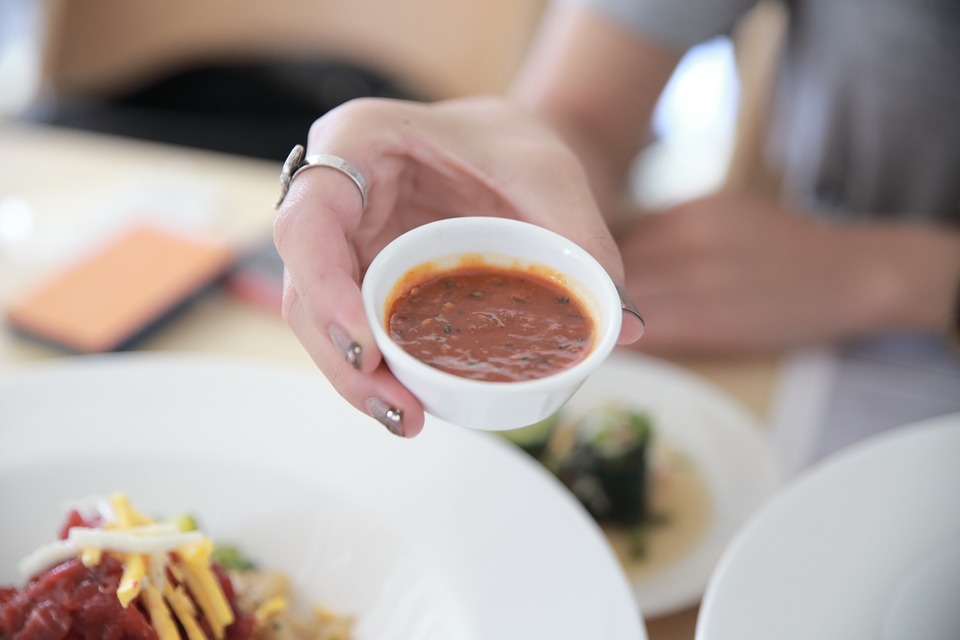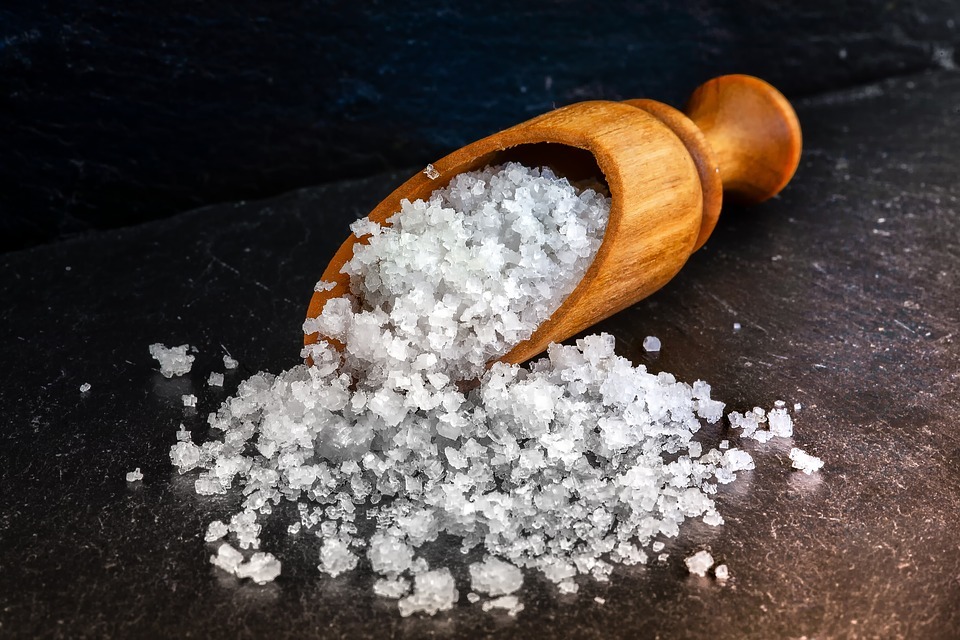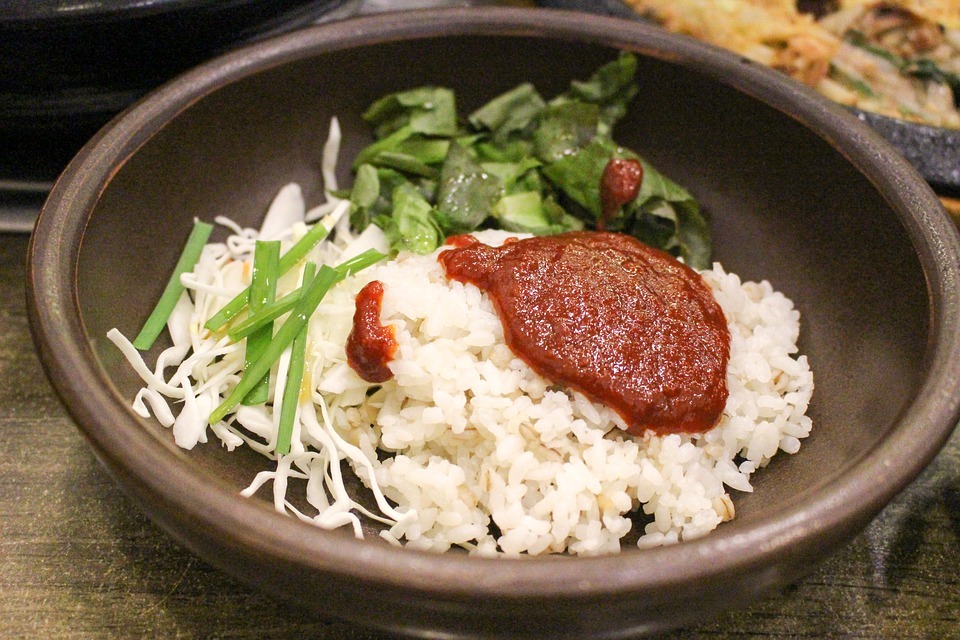Korean cuisine is made up of savory, spicy, and sweet dishes that offer plenty of variety on the dining table. Despite having different tastes and flavors, most Korean dishes often use the same ingredients, and they are just mixed and matched together to form a new flavor for numerous kinds of Korean food.
These ingredients normally used in Korean cooking is the reason why chefs already have several essential ingredients in their kitchen in order to properly cook Korean dishes.
If your family loves eating Korean food every once in a while, you would need these common Korean food ingredients in your kitchen cabinet to always be prepared once your children and your spouse request a Korean food dinner.
Korean Sea Salt
Almost every type of cuisine around the world use salt, but some Korean dishes need it more often than others. A good example of a dish where salt is necessary is kimchi, one of the most popular Korean dishes.
The vegetables that are fermented for kimchi require salt in order for the vegetables to ferment properly and to also give it its tasty flavor. There are a few types of salt that is used for kimchi, and the best product to represent one of these types of Korean salt is Chung Jung One’s Natural Premium Salt that is specifically used for kimchi brining.
The Natural Premium Sea Salt is coarse and has a milder taste than refined salt. In addition, Korean sea salt is more effective in brining kimchi since the water from the sea and its minerals often hastens the osmosis happening while fermenting the ingredients.
Soy Sauce (Ganjang)
An ingredient used in almost every Korean side dish or namul, the Korean soy sauce is different from the regular soy sauce because of its unique brewing process.
While regular soy sauce uses refined salt and corn syrup to give the sauce its sweet and sour flavor, Korean soy sauce like Sempio’s Naturally Brewed Soy Sauce uses sea salt and a mildly sweet carbohydrate calledisomalto-oligosaccharide to produce the same flavor.
There are two popular soy sauce products made by Sempio. One product is the high-quality Yanjo-Ganjang 701 that has 1.7% total nitrogen (TN), which indicates that the soy beans took longer to turn to soy sauce compared to most products. Take note that the higher the TN is, the longer the soy beans are fermented.
The other product is the Yanjo-Ganjang 501 that has 1.5% TN, making it cheaper than the 701 since the factory didn’t spend a lot of manpower and electricity to produce this sauce as it takes a shorter time to ferment than the 701. However, cheaper doesn’t always mean that it tastes bad, as the 501 is bought mostly by home cooks since it’s quite affordably while the 701 is usually used by restaurant chefs since they want to cook food of the highest quality.
Sesame Oil
A popular type of cooking oil in Korea that used in cooking fried dishes, sesame oil is often described to have a much sweeter taste as opposed to other cooking oils. Because it adds sweetness to dishes, sesame oil is typically used to cook Korean barbecue dishes like bulgogiandgalbi.
The most popular sesame oil product used in Korean cooking is Ottogi’sGosohan Sesame Oil. This sesame oil could also be used to cook non-Korean dishes like chicken lo-mein and beef teriyaki.
Sesame oil is also known to contain carotene and tocopherol. Carotene is an antioxidant that helps prevent cells from getting damaged by toxins and free radicals that can often cause cancer. Tocopherol is another antioxidant that strengthens the ability of carotene to fight toxins.
Short-grain White Rice
Koreans prefer cooking short grain rice instead of long grain as its soft and sticky texture often complements the crunchy and chewy properties of most Korean dishes. Also, short grain white rice is also more widely available in East Asian countries compared to long grain rice.
Tamanishiki’s Super Premium Short Grain Rice is the most known short grain rice product in the market. Despite having a Japanese brand name, this short grain rice is cultivated in California, making it cheaper and more widely available than rice from Japan since the location of cultivation lessens shipping costs for buyers.
Red Chili Pepper Flakes (Gochugaru)
A lot of Korean dishes are spicy, and it is all thanks to the red chili pepper flakes that are called gochugaru in Korea.
There are two types of red chili pepper flakes; one is the coarse chili flakes usually added to kimchi to give it its spicy flavor, while the other is the fine chili powder used to make gochujang or red chili pepper paste.
The coarse chili flakes products, like TastePadThai’s Korean Red Chili Pepper Flakes, are the ones that are mostly bought by cooks since a lot of them don’t need fine chili powder because you can easily by gochujang in the market.
Red Chili Pepper Paste (Gochujang)
As previously mentioned, people would most likely buy packs or containers of gochujang instead of buying fine chili powder because of its convenience.
Gochujang is specifically used as an ingredient in a lot of Korean dishes like bibimbap and tteokbokki. It can also be served as a condiment for non-spicy dishes like bulgogiand samgyeopsal.
Beside the fine chili powder, there also other ingredients mixed together to create gochujang, and these ingredients are glutinous rice, salt, barley malt powder or yeotgireum, and fermented soybeans or meju.
The most popular gochujang product in the market is the Chung Jung One Sunchang Gochujang, which is made from riceand sun-dried red chili peppers cultivated in Korea.
Soybean Paste (Doenjang)
Doenjang is utilized to add more flavor to stews and soups, but like it as a sauce for some Korean main dishes. The Korean soybean paste is usually made of fermented soybeans and brine.
Also, Doenjang is most often used as an ingredient for ssamjang, another traditional Korean paste. In order to make the common ssamjang, you would need not only doenjang, but also gochujang, sesame oil, and garlic.
One of the most popular soybean paste products is the Chung Jung One SunchangDoenjang that is packed inside a container that is also used to pack gochujang. Interestingly, to differentiate the types of Korean pastes, gochujang is usually packed in red containers while doenjang is in a brown one. Ssamjang is also packed in a similar container, but it is colored green.
Thanks to the continuing development of online grocery shopping, these once-rare ingredients are becoming more available to be purchased by home cooks and chefs in almost every part of the world. You can now cook your favorite Korean dishes at home and serve it to your friends or family by easily ordering these essential ingredients online.


